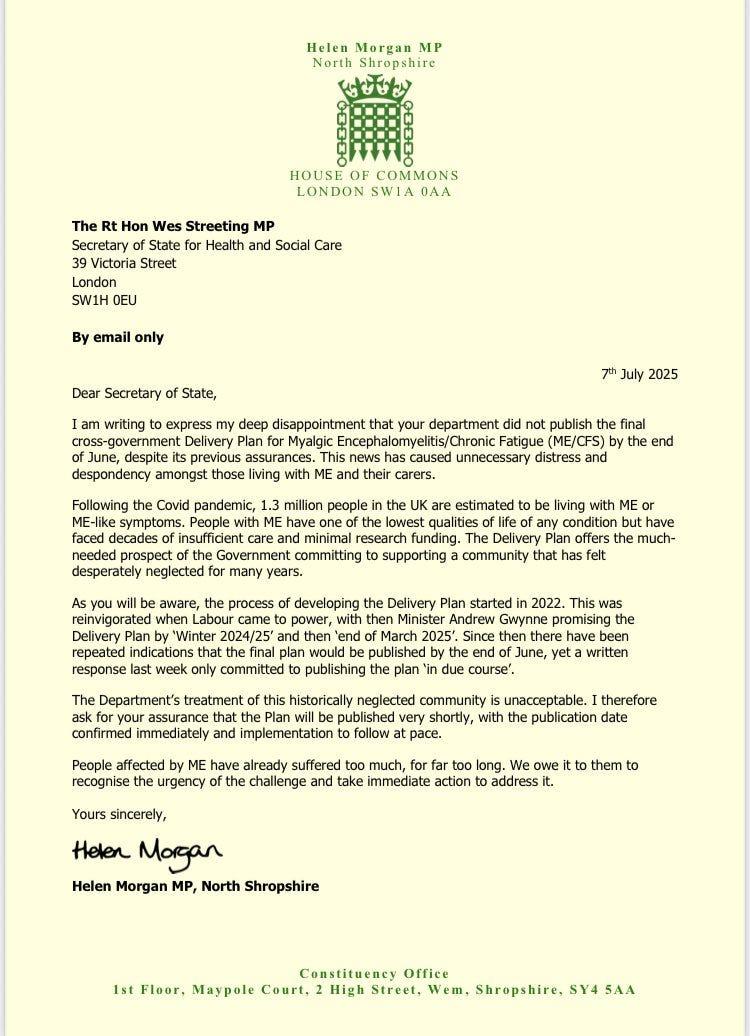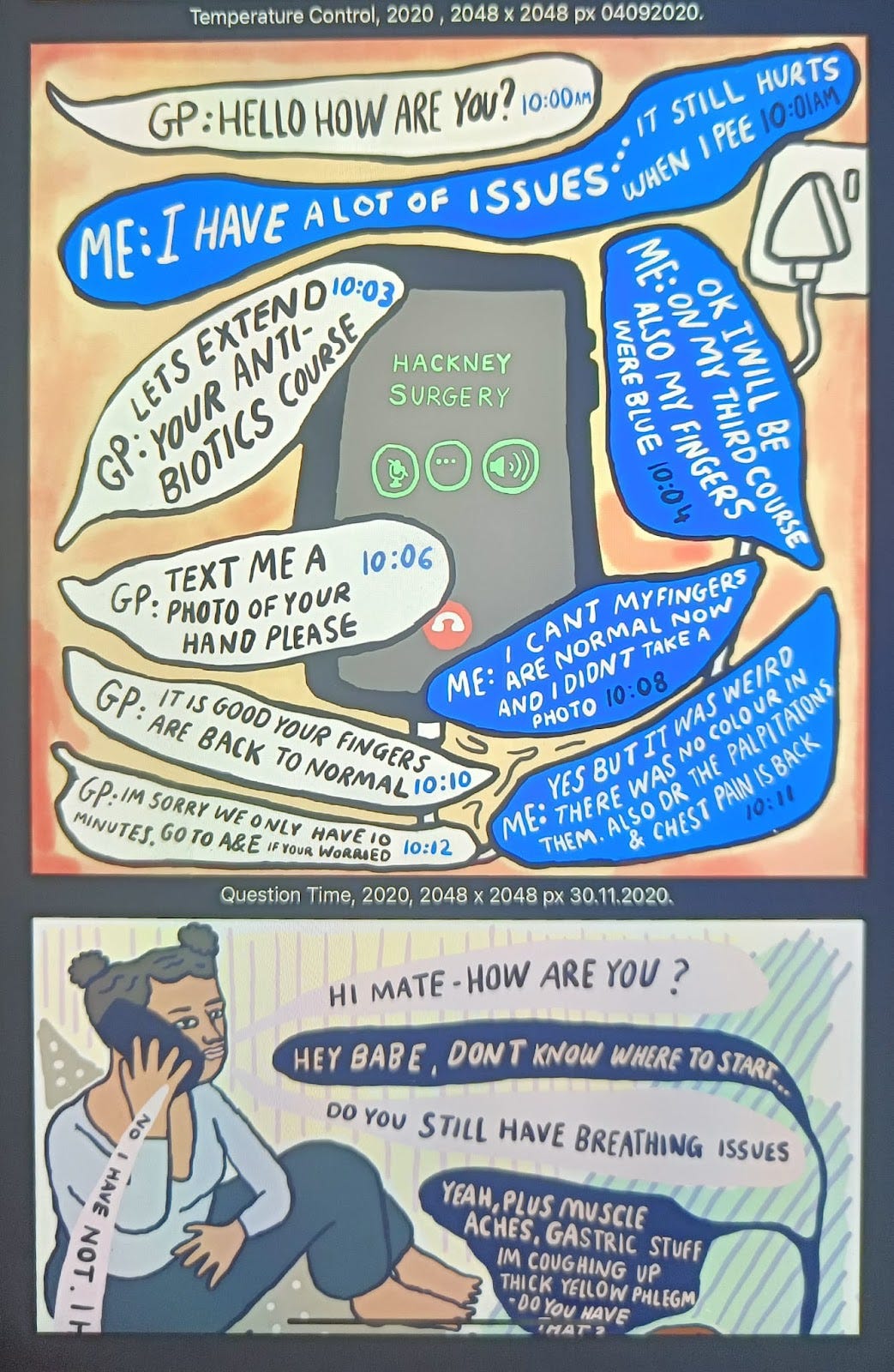Campaign Update #23: Getting Visible
First things first, we’re very proud of our Oonagh who started work last week as the brand new Communications and Policy Lead at Visible. In her honour, this week we’re bringing you a visibility themed update (bear with us, we’re short on ideas and in a heatwave).
One of the hardest parts of the ME and Long Covid experience is not feeling seen or recognised. This week we’re exploring what we’re seeing in terms of progress and where our communities have been visible, both in official processes and in unexpected places.
Where, oh where, is the Delivery Plan?
To kick it off, we’ll tell you what hasn’t been visible. Two weeks ago we shared an update on the latest delay to the publication of the long awaited Delivery Plan for ME. The end of June has passed, the 10-year plan for the NHS (allegedly the cause of the delay) has been published, and yet we’re *still* waiting for the Delivery Plan to emerge.
We’re very grateful to Helen Morgan, the Lib Dem Spokesperson for Health for writing to Wes Streeting last week to make clear her thoughts on the matter. In her letter, she recognised the depth of suffering among those affected by ME and highlighted the need for greater urgency in the government’s response:
“People affected by ME have already suffered too much, for far too long. We owe it to them to recognise the urgency of the challenge and take immediate action to address it.”
While the latest statement from Ashley Dalton, the health minister responsible for the Delivery Plan, told us we could expect it “shortly”, we’re still none the wiser. We’re very much hoping to see the plan will be visible before parliament adjourns for recess next week
NIHR funding announcement
A new funding opportunity was recently published by the National Institute for Health and Care Research (NIHR) focused on trialling repurposed interventions for “post-acute infection syndromes and associated conditions”.
The funding announcement - which specifically references ME/CFS, Long Covid and fibromyalgia - is focused on establishing the optimum approach for a UK-led Phase 2 Trial Platform that would test multiple repurposed pharmaceutical interventions and/or non-pharmacological interventions and devices.
With a grant size of up to £200,000 the scope is somewhat limited. This isn’t transformative funding to uncover a cure. But we hope this approach might help pave the way for some of the pharmaceutical interventions currently in use in the private sector to one day become more visible in NHS practice (see what we did there?).
It’s also noteworthy to see a clear statement that "lifestyle changes like taking more exercise” are considered “likely to be less favoured for a phase 2 platform”. There’s something we’re pleased to see made less visible.
Long Covid Visibility at the V&A
Finally, last week I (Emma) made it to the Design & Disability exhibition at the V&A. It looks at how design can affect structural inequalities relating to deaf, disabled and neurodivergent people, focusing on three areas: Visibility, Tools and Living. A wide variety of disabilities were referenced.
It was particularly moving to see Long Covid recognised as a disability in the Visibility section. Often when people talk about “disability” they are not thinking about those who are chronically ill, and too often those affected by conditions such as Long Covid remain invisible in mainstream disability discourse.
Still Ill: Corona Diary by illustrator Monique Jackson features drawings about her dealings with healthcare providers. She has also worked with Long Covid Support.
And, of course, you won’t be surprised to read that Oonagh’s new employer, Visible, featured in the Tools section. Definitely an exhibition to recommend! We’ll leave you with one final thought from it:






Thank you for all that you are doing — keep persevering... My Border Collie dog is an excellent example of perseverance; off he goes on his search for some 'present' (a shoe, a tennis ball, a leaf that has fallen off a plant...anything that he thinks will make a good impression, bless him) to offer up in return for a reward from me (usually a lovely smile and pat, but more often the much-coveted dog biscuit)... If it doesn't work. Off he goes again, in search of another. And then again. And again. AND..! Keep on being a (albeit lovely) pest and hopefully they'll actually deliver just to get you to go away for a second!